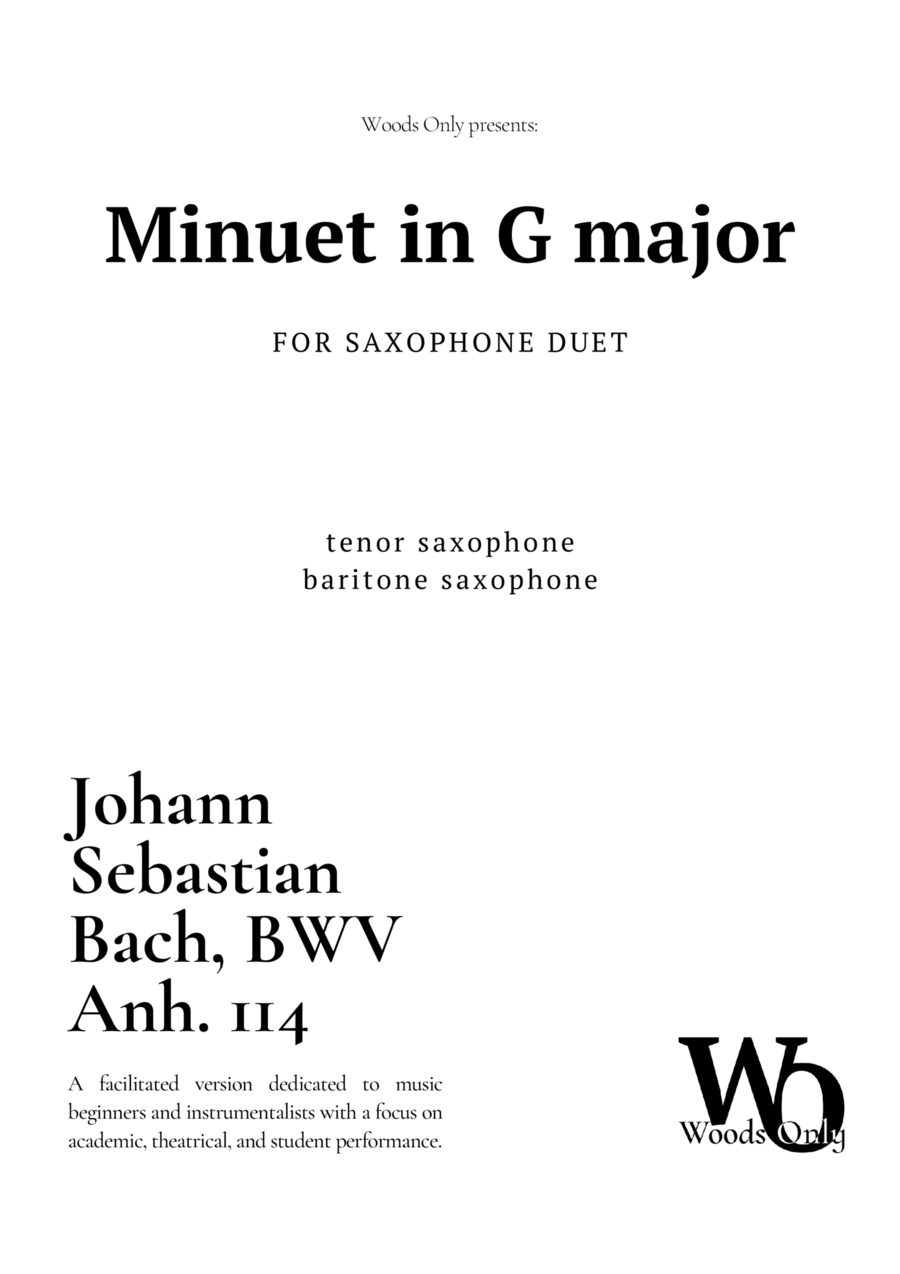Baritone Saxophone,Instrumental Duet,Tenor Saxophone - Level 1 - Digital Download SKU: A0.1044235 Composed by Christian Petzold and Johann Sebastian Bach. Arranged by Ander. Baroque,Renaissance,Traditional,Wedding. 4 pages. Woods Only, Arrangements #648979. Published by Woods Only, Arrangements (A0.1044235). This easy arrangement for low saxophone duet has been adapted to be simple to perform and understand the period minuet form of the original work for various levels of musical knowledge. It can be freely played by beginning students due to the ease built into the piece in relation to the author's suggested interpretation. Recommended for performance in academic recitals, and public festivals, it also serves as a study of Baroque repertoire. This famous piece has traditionally been attributed to Johann Sebastian Bach, as it appears in the Notebook for Anna Magdalena , a notebook that Bach gave to his wife Anna Magdalena in 1725 and which was to be filled with the favorite selections of Bach family members. However, recent research has concluded that this minuet, sometimes referred to as BWV Anhang 114. was probably composed by Christian Petzold, a German composer and organist contemporary with Bach.
